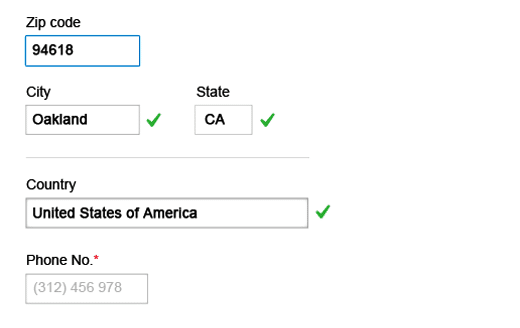Is your online business ready for the holiday shopping season? How about your digital marketing and email marketing strategies? Being ready now may be more important than you think.
Our retail data will illustrate why you should get your business and marketing strategy ready, sooner rather than later—and we give some guidance on how to do it without the hassle.
If you’re new to ecommerce, there’s a lot of opportunity to sell and get your business off the ground, especially during this time of year. But for ecommerce beginners, it can feel overwhelming.
There’s so much to plan and so many decisions to make, and most small businesses don’t have the employees needed to delegate tasks.
You might be wondering: Is there even time to market my products or service this year, now that it’s already this late in the year? You’re busy stocking inventory, managing returns and promotions, monitoring customer service, product reviews, and feedback, and resolving shipping issues—so it’s easy to put your email marketing on the back burner.
Despite your lengthy to-do list, a fully operational email marketing program doesn’t have to be difficult or time-consuming to set up.
Consider this: Although email marketing has been around longer than most social media platforms and digital ad networks, it continues to drive impressive results. For every $1 spent, email marketing generates an average of $44 in return on investment (ROI) and gives marketers the broadest reach of all the channels available to them.
Retailers see this opportunity and use email marketing to drive real business results with automation, personalization, social proof, and enhanced integrations.
By the numbers: Ecommerce statistics during the holidays and beyond
Besides the obvious reasons, there are a few key factors why earning sales should be a top priority this season. If last year’s holiday shopping numbers are any indication, there’s plenty to be excited about:
- Online shoppers spent $122 billion in November and December 2018, according to Internet Retailer.
- Overall holiday shopping was nearly $720 billion last year.
- For the bulk of November, online commerce drove $58 billion in online sales—a jump of 20% from the year before, according to Adobe Analytics.
- Cyber Monday broke new records, earning nearly $8 billion and making it “the largest online shopping day of all time in the U.S.,” says Adobe Analytics.
- Ecommerce sales as a percentage of total retail sales have grown from 5.1% in 2007 to 14.3% in 2018, finds Internet Retailer.
There’s no shortage of promotional days and themes to market around, including Grey Thursday, Black Friday, Thanksgiving weekend, Cyber Monday, Giving Tuesday—and every day thereafter through Christmas.
Want specific help for Giving Tuesday? See “How to Plan a Giving Tuesday Campaign” and “Don’t Miss Out on Giving Tuesday This Holiday Season (2019).”
What’s Grey Thursday?
Grey Thursday is the head start on Black Friday shopping (i.e. Thanksgiving Day), either at a retail store or online.
The biggest Grey Thursday shopping trends appear to be online. Adobe Analytics reports that online shopping on Thanksgiving Day 2018 accounted for $3.7 billion in sales. Compare that to the previous year, and it’s an increase of 28%.
Black Friday still accounted for nearly double that amount, but the Thanksgiving year-over-year online shopping trend is one of the largest one-day ecommerce increases in history.
Despite the increase in shopping on the Thanksgiving holiday, most consumers still prefer to wait until Black Friday or Cyber Monday for their holiday purchases.
In fact, more than 60% of people say they wouldn’t consider shopping on Thanksgiving.
You can capture the holiday spirit in a number of ways by showing how your company gives thanks.
Here’s a great example from Brandless sharing gratitude toward its customers—and highlighting how the company gives back:
Source: Really Good Emails
Get more details, tactics, and real-world examples in “Is Grey Thursday a Thing, and Should It Be Part of Your Strategy?”
Prepare for seasonal web visits and ecommerce spikes.
What will happen to your website and revenue during the holiday season? The holiday bump is real. According to LiveChat, here’s what to expect:
- Roughly 120% more website visits on the busiest days of the holiday season
- 63% more visits in November and December than the rest of the year
- 25% increase in revenue
Translation: Shore up your back-end systems and prepare your web hosting, commerce store experience, and customer service for peak activity.
Get your tech and customer support in order.
“Free up database disk space and clear old and unnecessary files and logs throughout your site. Give your site the ultimate speed test by going to GTmetrix. Forecast how many visitors your site can withstand by load-testing on sites like Load Impact,” advises WooCommerce.
This also means having a web and commerce experience that is optimized for mobile platforms. Prepare your customer support for the volume impact in November and December. Email will be a major outlet for your customers.
Simplify your ecommerce checkout procedure.
Do everything you can to make checkout simple and secure. Giving this a little attention can go along way—especially when customer visits spike. There are a host of ways to make checkout easier.
One way is to reduce steps in common web forms. Digital marketing pro Neil Patel advises the following step-reduction method:
“By moving the ZIP code form to the front of the address entry, we can use information already available to us in order to streamline customer input. Using free lookup tables, a checkout can match the exact values for city, state, and country solely from the ZIP code. The checkout does the work, thus eliminating the need for customers to type in the information.”
Source: Neil Patel
And now a word about cart abandonment
It’s an unfortunate fact of ecommerce today: Cart abandonment happens more often than not.
If your account setup, checkout flow, and shopping cart take longer than customers expect, they will abandon their orders.
People are easily distracted or disappointed when a digital process feels like it could (and should) be faster. According to a Baymard Institute study, 69.57% is the average rate of ecommerce cart abandonment. It’s even higher on mobile, at 85.6%, per Fundera.
Fundera reports that customers want an ideal checkout flow of 12 to 14 steps, yet the average storefront flow has 23.48 steps. Take action to smooth out your road to revenue.
Once your checkout process is optimized, email can be an excellent reminder to ask for the sale. An extra incentive can help too. Saatchi Art, for example, uses the idea of increased “sellout” potential to add urgency—plus a nice 10% sweetener to try to seal the deal.
Source: Really Good Emails
Don’t be afraid to showcase positive reviews in your holiday email campaign.
A great product and price—and ease of delivery—will help customers share their experience with friends. Use positive reviews and social proof in your email, paid ads, and search campaigns.
The more authentic, the better.
Leverage the human desire to help others. Because all customers and prospects expect validation from product reviews and positive social sentiment from real people.
While not specific to the holidays, the review below illustrates people’s desire to share how happy they are when they reflect on a positive product experience. This is a clothing example from a Facebook post:
Source: Optinmonster
Get personal with audience email segmentation.
If your email and segmentation efforts feel like robotic, generic form letters, it won’t work. It’s time to get personal. Consumers like their experiences to feel like they’re having them with other people, as they would in a brick-and-mortar store.
The data is clear: Being as human as possible works. Per Monetate, 86% of companies getting high ROI online reported that personalization made up 21% or more of their marketing budgets.
Our own research finds that people are 26% more likely to open an email with a personalized subject line. Likewise, marketers note a 760% increase in revenue from segmented campaigns.
Email receipts are a powerful marketing opportunity—and within CM Commerce, you can use the full suite of segmentation capabilities for receipts, including segments for:
- Special products
- Loyal big spenders and rewards members
- Buyers who aren’t rewards members
Tags are great for manually organizing your customer records in a specific way. You can easily use your Shopify customer tags in CM Commerce segments:
Need more evidence? See “25 Email Personalization Stats That Might Surprise You.”
Go big for Cyber Monday.
Email marketing is one of the best ways to reach shoppers on Cyber Monday, since the entire concept is built around being online and away from the Black Friday crowds. Connect with customers online, direct them to your online store, and earn your piece of the pie.
Some companies are having fun with the “cyber” idea—and making emails interactive and thematic. Here’s an example from Alternative Apparel that uses the old-school “Space Invaders” arcade game as inspiration for a Cyber Monday email:
Source: Jimmy Barron / Pinterest
See specific holiday shopping ideas for retailers—including embracing the theme and creating a countdown—in “6 Modern Examples of Cyber Monday Emails.”
Keep your testing to a minimum during the holiday shopping season.
Holiday shoppers want deals like free shipping or $10 off their first order, and they are willing to go through a long checkout or other experience that is normally perceived as negative during this period.
“Avoid A/B testing at all costs during the holiday season. The data won’t reflect realistic numbers, and people have completely different mentalities during the holidays,” writes WooCommerce.
It might even free you from worrying about testing for a short time—and you can resume testing during the rest of the year.
Need more help? Check out our “Complete Guide to Email Marketing for Small Businesses.”
Wrap up
By using this email campaign info, you’ll be on your way to creating and sending emails that resonate with your subscribers this holiday season.











